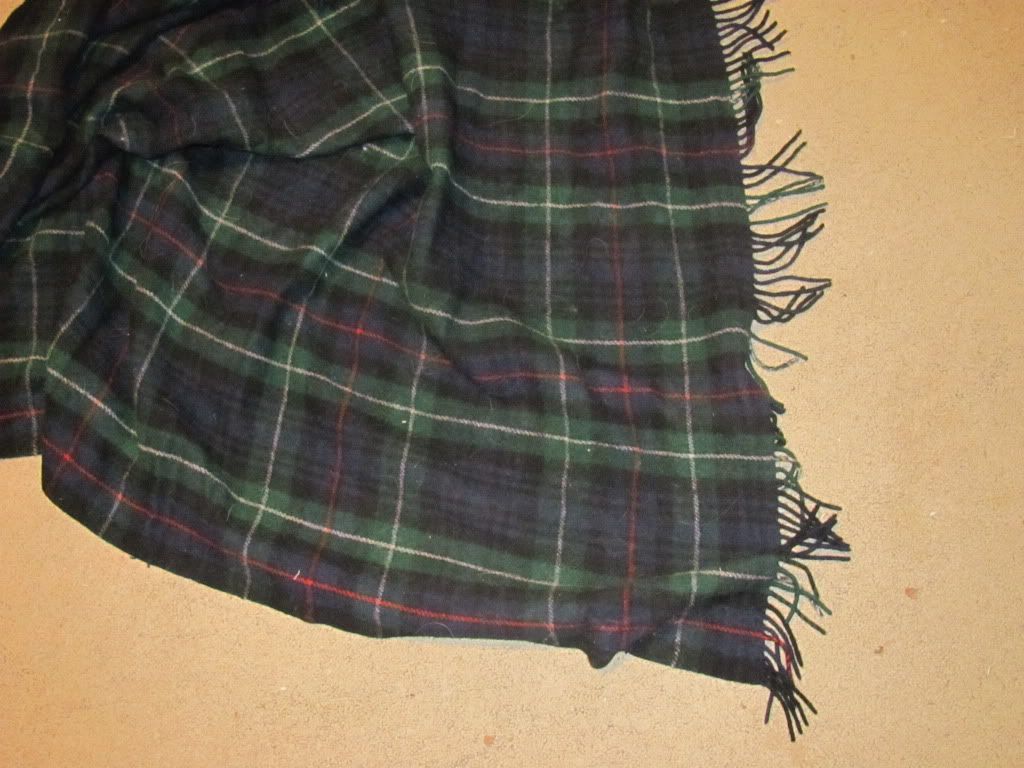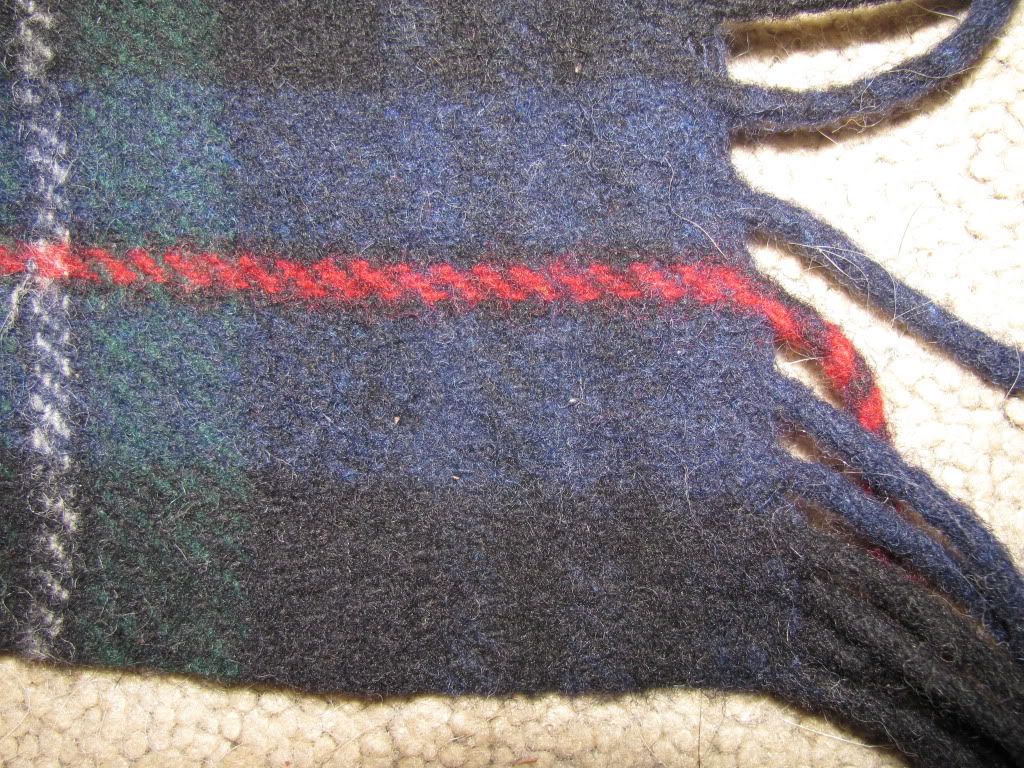I have searched the site and the internet, but have not had much in the way of a satisfactory answer to my question. I have a 100% wool plaid blanket that my mother gave me, and I have used to some extent to keep from hurting anyone's feelings. However, I have gone back in forth in my mind on its authenticity. Some campaigners don't seem to have a problem with it, and some don't like it. I'm not an expert on weaving, but I'll show some close up pictures and hopefully someone will have an idea. I do know that the pattern in the blanket dates to the 18th century, and it is one of main plaids used by the British military up to present times. I do know that crazy plaids are a no no, but this is a pretty standard plaid that's been around well before the war. The label it originally had says Highland Tartan Tweeds of Scotland. I have been unable to find anything out about this company in particular let alone their manufacturing process. I suppose the first question is if it's a correct looking construction, if not than it sort of kills the whole thing.









Comment